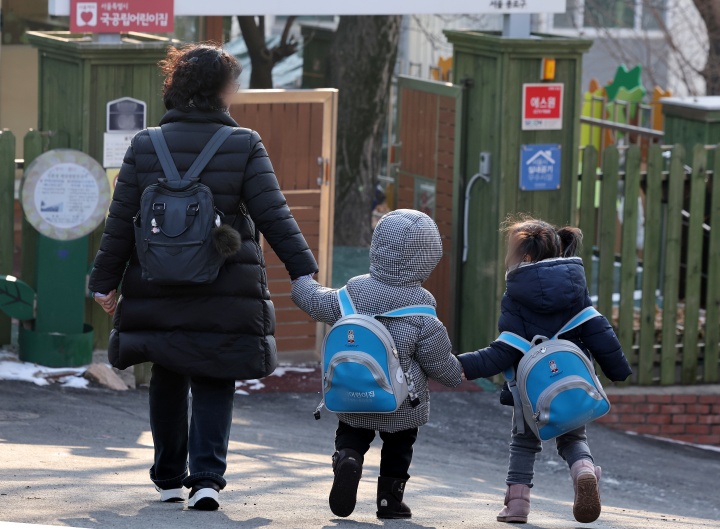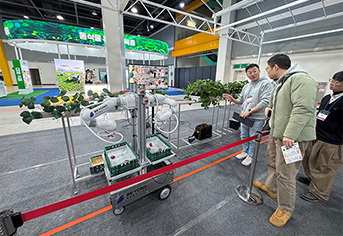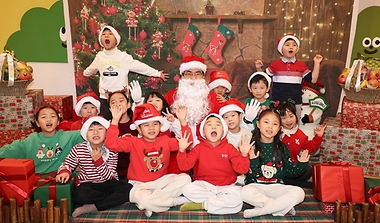콘텐츠 영역
(국영문 동시 배포) ‘갯벌어로’ 국가무형문화재 신규종목 지정 예고
- 서·남해안의 갯벌에서 나타나는 어로와 관련된 전통지식과 어촌 공동체의 문화 -
- 지역별 갯벌 특성에 따른 어로 기술의 다양성, 한국인의 전통적 자연관 보여줘 -
문화재청(청장 김현모)은 ‘갯벌어로’를 신규 국가무형문화재로 지정 예고하였다. 이번 지정 예고 대상은 전통어로방식 중 ‘갯벌어로’로, 맨손 혹은 손도구를 활용하여 갯벌에서 패류·연체류 등을 채취하는 어로 기술, 전통지식, 관련 공동체 조직문화(어촌계)와 의례·의식이다.
갯벌은 예로부터 어민(漁民)들에게 ‘갯벌밭’·‘굴밭’으로 불리는 등 농경의 밭에 상응(相應)하여 ‘바다의 밭’으로 인식되어 왔다. 또한, 갯벌을 공동재산으로 여겨 마을 사람들이 함께 관리하는 등 현재에도 어촌공동체(어촌계)를 중심으로 어민들 생업의 중추적 역할을 하고 있다. 특히, 우리나라의 갯벌은 굴, 조개, 낙지, 새우 등 다양한 해산물의 보고(寶庫)로서 한국 음식문화의 기반이 되어왔다.
갯벌어로 방식은 기본적으로 맨손과 다양한 손 도구를 이용하는데, 해류(海流)와 조류(潮流), 지질(地質) 등 해역에 따라 다양한 어로 기술이 있고 펄갯벌, 모래갯벌, 혼합갯벌, 자갈갯벌 등 갯벌 환경에 따라 어로 방법과 도구가 달라진다. 예를 들면, 펄갯벌의 뻘배(널배), 모래갯벌의 긁게·써개·갈퀴, 혼합갯벌의 호미·가래·쇠스랑, 자갈갯벌의 조새 등이 대표적이고 오랜 세월 전승되면서 같은 도구라도 지역별로 사용방법이 분화된 것이 특징이다.
또한, 같은 패류·연체류라고 해도 지역별로 어획방법이 달라진다. 예를 들어, 모시조개(가무락)는 갯벌의 종류에 따라 호미를 사용하여 캐는 지역이 있는가 하면, 맨손으로 캐는 지역이 있다. 펄갯벌은 모시조개 숨구멍을 눈으로 확인하기 쉽고 맨손으로도 작업이 용이하지만 모래갯벌의 경우에는 모시조개의 위치를 눈으로 확인하기 어렵기 때문에 어민들은 호미로 갯벌 바닥을 두드려 그 진동에 놀란 모시조개가 물을 뿌리거나 입을 벌리는 것을 보고 그 위치를 확인한다. 이를 두고 어민들은 ‘눈을 뜬다’라고 한다.
우리나라 갯벌어로의 역사를 살펴보면 갯벌어로를 직접적으로 언급한 문헌은 확인하기 힘들지만, 서·남해안에서 발굴된 신석기·청동기·철기·고려 시대 패총에서 갯벌에서 채취한 패류(참굴, 꼬막, 바지락 등)가 다량으로 확인됨에 따라 그 역사가 오래되었음을 미루어 짐작할 수 있다. 특히, 갯벌에서 채취되는 각종 패류·연체류 등은 조선 후기 문신인 정약전(丁若銓, 1758~1816)이 쓴『자산어보(玆山魚譜)』에 관련 기록이 구체적으로 확인된다.
갯벌어로와 관련된 생산의례와 신앙, 놀이는 우리나라에서만 찾아볼 수 있는 고유한 문화로 대표적인 공동체 의례로는 ‘갯제’가 있다. 갯제는 ‘조개부르기’, ‘굴부르기’ 등으로 불리기도 하는데, 갯벌 해산물의 풍요(饒)를 기원하며 동네 주민들이 조개나 굴 등을 인격화하여 갯벌에 불러들이는 의식이다. 이외에도 풍어(漁)를 예측하는 ‘도깨비불 보기’와 굴과 조개를 채취한 뒤 마을 사람들이 함께 노는 ‘등빠루놀이’도 우리나라 갯벌의 풍습과 전통문화를 잘 보여준다.
특히, 우리나라 서남해안 지역은 풍어와 조업(潮業)의 안전을 위해 갯벌 어장(漁場)고사로 ‘도깨비 신앙’이 활발하게 전승되어 왔다. 예컨대 바닷물이 빠져나갈 때 갯벌의 구멍에서 ‘뿅뿅’거리는 소리를 들을 수 있는데, 이를 어민들은 도깨비가 걸어가면서 생긴 소리라고 생각했다. 이렇게 갯벌 내 어류활동을 도깨비가 관장하고 있다는 믿음으로 ‘어장고사’를 지낼 때 중요한 제물(祭物)로 메밀범벅이나 메밀묵을 올렸는데 이는 도깨비가 메밀 냄새를 좋아한다는 설(說)에 따른 것이고 이에 따라, 어장고사를 ‘도깨비고사’라 부르기도 한다.
현대에 와서 갯벌의 생태·사회·문화 가치가 재조명되고 유네스코 생물권보전지역, 갯벌도립공원 등으로 지정되는 사례가 증가하였다. 올해 7월에는 서천, 고창, 신안, 보성·순천 등의 갯벌이 유네스코 세계자연유산(한국의 갯벌, Getbol, Korean Tidal Flats)으로 등재되기도 하였다. 갯벌어로를 전승하고 있는 지역의 어촌공동체가 갯벌과 갯벌어로의 지속을 위해 자율적으로 금어기(禁漁期) 설정과 치어(稚魚) 방류 등을 진행하는 등 전승 활성화 의지가 높다. 갯벌어로를 통해 자연을 채취의 대상이 아니라, 인간과 자연이 서로 영향을 주고받으며 공존하는 대상으로 보는 전통적 자연관을 살펴볼 수 있다.
* 금어기(禁漁期): 자원보호를 위해 수산동식물의 포획·채취가 금지되는 기간
* 치어(稚魚): 알에서 깬 지 얼마 안 되는 어린 물고기
이처럼 ‘갯벌어로’는 ▲ 오랜 역사를 가지고 갯벌이 펼쳐진 한반도 서·남해안전역에서 전승되고 있는 점, ▲ 조선 시대 고문헌에서 갯벌에서 채취한 각종 해산물을 공납품으로 진상했던 기록이 확인되는 점, ▲ 갯벌어로 기술의 다양성은 학술연구 자료로서 그 가치와 가능성이 높다는 점, ▲ 갯벌어로와 관련된 생산의례와 신앙, 놀이는 우리나라 갯벌어로의 고유한 특징인 점, ▲ 갯벌의 지질별 어로도구의 다양성과 지역별 갯벌어로의 특색이 뚜렷한 점, ▲ 현재에도 갯벌이 넓게 펼쳐진 서·남해안 마을 대부분이 어촌 공동체(어촌계)를 중심으로 생업을 유지하고 있는 점이 국가무형문화재로 지정할 가치가 있다고 평가받았다.
다만, 갯벌어로는 갯벌이 펼쳐진 한반도 서·남해안 전역의 갯벌 어민들이 전승·향유하고 있는 문화라는 점에서 이미 지정된 ‘김치 담그기’, ‘장 담그기’ 등과 같이 특정 보유자나 보유단체는 인정하지 않았다.
* 특정한 보유자나 보유단체를 인정하지 않고 지정한 국가무형문화재 현황(총 12건)
: 아리랑, 제다, 씨름, 해녀, 김치 담그기, 제염, 온돌문화, 장 담그기, 전통어로방식어살, 활쏘기, 인삼재배와 약용문화, 막걸리 빚기
문화재청은 어살[漁箭]에 이어 ‘갯벌어로’를 어로방식에 관한 두 번째 무형문화재로 지정 예고한 바, 앞으로도 세대를 거쳐 꾸준히 전승되고 있는 다양한 어로 관련 전통지식들을 추가적으로 조사하여 지정을 확대해 나갈 방침이다. 아울러 ‘갯벌어로’에 대해 국민이 무형유산으로서 가치를 공유하고 전승에 함께 참여할 수 있도록 학술연구, 전승 활성화 프로그램 등을 적극적으로 지원해 나갈 예정이다.
문화재청은 30일 간의 예고 기간 중 각계의 의견을 수렴하여 국가무형문화재지정 여부를 최종적으로 결정할 예정이다. 지정 예고 기간 중 문화재청 누리집(http://www.cha.go.kr)과 ‘케이(K) 무형유산 동행’ 인스타그램을 통해서 ‘갯벌어로’에 대한 다양한 의견을 제출할 수 있다.
* ‘케이(K) 무형유산 동행’ SNS 주소: 인스타그램(instagram.com/k_intangible_heritage_u)
TIDAL FLAT HARVESTING ENTERS THE NATIONAL HERITAGE LIST
The Cultural Heritage Administration is announcing in the official gazette the planned entry of a new element onto the National Intangible Cultural Heritage list. Designated under the name "tidal flat harvesting," the new element encompasses the traditional knowledge and skills, the communal practices, and the rites associated with collecting invertebrates in the tidal flats along the western and southern coasts of the Korean Peninsula.
Coastal wetlands, nicknamed "sea fields" in Korea, have long provided an important source of livelihoods for local people. The traditional practice of maintaining tidal flats as communal property has been transmitted to the present in the form of village cooperatives. Korean tidal flats are a treasure trove of diverse ocean resources and have held a disproportionate influence over the formation and development of the nation’s diet.
Harvesting in Korean tidal flats can be performed with the bare hands or using tools. Diverse skills are applied depending on the condition of the tides and currents. Methods and tools differ based on the geological environments of particular areas as well―whether mud or sand dominates the seabed or whether there is gravel present.
The practice of harvesting shellfish and other invertebrate animals in coastal wetlands enjoys a long and steady history on the Korean Peninsula. The western and southern coastal areas have produced many large shell middens dating to the New Stone, Bronze, and Iron Ages all the way to the Goryeo Dynasty. Written records on tidal flat harvesting can be found in a book on seafood from the Joseon period―Jasan eobo by the Biologist Jeong Yak-jeon (17581816).
Tidal flat harvesting involves a number of performative rites, enriching Korean culture and traditions. The most well-known community tradition associated with it is the gaet je, a seasonal festival praying for a good harvest. This coastal village ritual is also called "a rite to call clams" or "a rite to call oysters." Members of a local village gather to invite all kinds of edible sea creatures into their flats as if they were humans. In addition, there are separate community rituals for predicting the quantity of the catch or to celebrate a good harvest.
The ecological, social, and cultural values of tidal flats are increasingly being appreciated these days. A growing number of tidal flats in Korea have been designated as UNESCO Biosphere Reserves and as provincial-level natural parks by the Korean government. Four tidal flat areas spanning Seocheon, Gochang, Sinan, Boseong, and Suncheon were collectively inscribed on the World Heritage List this past July. Coastal communities practicing tidal flat harvesting are strongly committed to the healthy transmission of their tradition. They voluntarily abstain from harvesting during collectively designated fallow periods and release juvenile invertebrates. These practices testify to the traditional Korean cosmology in which nature is not imagined as a material that humans are intended to exploit, but part of a greater cycle encompassing both humans and non-humans.
Tidal flat harvesting was positively evaluated during the deliberation process for the following reasons: It possesses a time-honored history with many active transmission communities over an extensive area; This history is supported by written records from at least the Joseon period; The diverse skills and techniques manifested in tidal flat harvesting hold great potential for academic research; There are many unique rites and festivals associated with tidal flat harvesting; The practice shows great local diversity through, for example, the different tools applied; and It continues to serve as an important source of livelihoods in Korean communities.
As tidal flat harvesting is being transmitted across the western and southern coastal areas in many villages, no particular individuals or organizations will be recognized as "holders" of this element.
The notice on the planned listing of tidal flat harvesting will be posted for 30 days, during which opinions from the public will be collected to inform the final decision on the designation of this new element as National Intangible Cultural Heritage. There is a social network platform through which members of the public may freely submit their opinions (instagram.com/k_intangible_heritage_u).
<안내 홍보물(갯벌어로지도)>
“이 자료는 문화재청의 보도자료를 전재하여 제공함을 알려드립니다.”
- 공공누리 출처표시의 조건에 따라 자유이용이 가능합니다. (텍스트)
- 단, 사진, 이미지, 일러스트, 동영상 등의 일부 자료는 문화체육관광부가 저작권 전부를 보유하고 있지 아니하므로, 반드시 해당 저작권자의 허락을 받으셔야 합니다.
문의처 : 문화체육관광부 정책포털과
| 뉴스 |
|
|---|---|
| 멀티미디어 |
|
| 브리핑룸 |
|
| 정책자료 |
|
| 정부기관 SNS |
|
※ 브리핑룸 보도자료는 각 부·처·기관으로부터 연계로 자동유입되는 자료로 보도자료에 포함된 연락처로 문의
※ 전문자료와 전자책의 이용은 각 자료를 발간한 해당 부처로 문의
이전다음기사
다음기사『토기로 본 중원문화의 특징과 정체성』 학술토론회 개최정책브리핑 게시물 운영원칙에 따라 다음과 같은 게시물은 삭제 또는 계정이 차단 될 수 있습니다.
- 1. 타인의 메일주소, 전화번호, 주민등록번호 등의 개인정보 또는 해당 정보를 게재하는 경우
- 2. 확인되지 않은 내용으로 타인의 명예를 훼손시키는 경우
- 3. 공공질서 및 미풍양속에 위반되는 내용을 유포하거나 링크시키는 경우
- 4. 욕설 및 비속어의 사용 및 특정 인종, 성별, 지역 또는 특정한 정치적 견해를 비하하는 용어를 게시하는 경우
- 5. 불법복제, 바이러스, 해킹 등을 조장하는 내용인 경우
- 6. 영리를 목적으로 하는 광고 또는 특정 개인(단체)의 홍보성 글인 경우
- 7. 타인의 저작물(기사, 사진 등 링크)을 무단으로 게시하여 저작권 침해에 해당하는 글
- 8. 범죄와 관련있거나 범죄를 유도하는 행위 및 관련 내용을 게시한 경우
- 9. 공인이나 특정이슈와 관련된 당사자 및 당사자의 주변인, 지인 등을 가장 또는 사칭하여 글을 게시하는 경우
- 10. 해당 기사나 게시글의 내용과 관련없는 특정 의견, 주장, 정보 등을 게시하는 경우
- 11. 동일한 제목, 내용의 글 또는 일부분만 변경해서 글을 반복 게재하는 경우
- 12. 기타 관계법령에 위배된다고 판단되는 경우
- 13. 수사기관 등의 공식적인 요청이 있는 경우
정책 NOW, MY 맞춤뉴스
정책 NOW
인기, 최신, 오늘의 영상 , 오늘의 사진
인기 뉴스
-
 9급 공무원 공채시험, 종합적 사고력 평가 'PSAT'로 전환
9급 공무원 공채시험, 종합적 사고력 평가 'PSAT'로 전환
-
 대중교통비 무제한 환급…K-패스 '모두의 카드' 도입
대중교통비 무제한 환급…K-패스 '모두의 카드' 도입
-
 내년부터 아동수당 연령 단계적 확대…통합돌봄 전국 시행
내년부터 아동수당 연령 단계적 확대…통합돌봄 전국 시행
-
 한국형 3축체계 전력 보강…'50만 드론전사' 등 미래전 역량 강화
한국형 3축체계 전력 보강…'50만 드론전사' 등 미래전 역량 강화
-
 육아휴직 대체인력 지원 1개월 연장…내년 구직급여 상한액 ↑
육아휴직 대체인력 지원 1개월 연장…내년 구직급여 상한액 ↑
-
 300억 이상 정부자산 매각 땐 국회 사전보고…헐값 매각 원천 차단
300억 이상 정부자산 매각 땐 국회 사전보고…헐값 매각 원천 차단
-
 내년 농업 R&D 예산 15% 넘게 증가…첨단기술로 혁신 일으킨다
내년 농업 R&D 예산 15% 넘게 증가…첨단기술로 혁신 일으킨다
-
 산업부, 내년 초 '5극 3특' 성장엔진 산업 선정…AI 팩토리 500곳으로 확대
산업부, 내년 초 '5극 3특' 성장엔진 산업 선정…AI 팩토리 500곳으로 확대
-
 정부 확보 GPU 1만 장, 산·학·연에 푼다…"AI혁신 본격 지원"
정부 확보 GPU 1만 장, 산·학·연에 푼다…"AI혁신 본격 지원"
-
 정부, 초혁신경제 프로젝트 완결…5년 내 초전도체 시제품 개발
정부, 초혁신경제 프로젝트 완결…5년 내 초전도체 시제품 개발
최신 뉴스
- [보도자료] 경제사회노동위원회 김지형 위원장, 포항-포스코 원하청 노사 현장 간담회
-
영상
 2026년 의료급여 부양비 폐지 : 무엇이 어떻게 달라지나요?
2026년 의료급여 부양비 폐지 : 무엇이 어떻게 달라지나요?
- 연구장비 도입심의를 통해 금년에 828억원 절감
- 2025년도 대리점거래 서면실태조사 결과 발표
- 국립공원공단, 멧돼지 안전관리지도 개발로 도심형 국립공원 탐방객 안전 강화
- 무인기, 인공지능 활용한 스마트 댐 안전관리 시스템 구축 더욱 안전한 댐 관리 가능
- 과기정통부, 위성망 이용 지원 시스템으로 국가 우주 영토 확보 가속화
- 국민과 함께 생성형 AI 정보 오류를 바로잡는다 「정보 오류 없는 찐 AI 챌린지」 캠페인 추진
- 국토교통부 2025년 공간정보산업 통계조사 결과 발표
- 2026년 농식품 바우처, 12월 22일부터 신청하세요
 이 누리집은 대한민국 공식 전자정부 누리집입니다.
이 누리집은 대한민국 공식 전자정부 누리집입니다.









